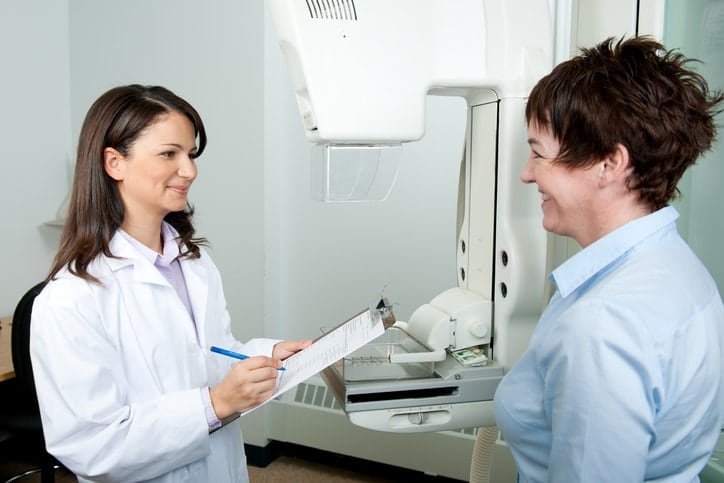What Different Breast Types Mean for Mammograms

What Is Breast Density?
Breasts contain three types of material:
- Lobules
- Ducts
- Connective tissue
Lobules are made up of glandular tissue and produce milk. Ducts carry milk to the nipples, while connective tissue (both fibrous and fatty) are responsible for giving breasts their shape and size and hold the lobules and ducts in place.
Breasts are considered dense if they contain more glandular and fibrous tissue than fatty tissue. Dense breasts are normal but usually become more fatty as a woman ages. Between 50 and 60 percent of women in their early 40s have dense breasts in contrast to between 20 and 30 percent of women in their early 70s.
Only mammogram images can discern the density of breast tissue. Visual aspects such as size, shape, and firmness of breasts do not play a factor.
Why Should I Be Concerned About My Breast Density?
Although researchers are still looking for the cause, dense breasts are linked to having an increased chance of developing breast cancer. According to the Susan G. Komen Foundation, studies show women with dense breasts are four to five times more likely to get breast cancer than women of a similar age with mostly fatty breast tissue.
Breast density is divided into the following categories:
- Almost completely fatty tissue
- Limited areas of dense, glandular tissue
- Uniformly dense, glandular and fibrous tissue
- Almost completely dense breast tissue
How Does Breast Density Affect Mammograms?
On a mammogram image, fatty tissue appears black while abnormalities that can be cancerous appear white. Because dense breast tissue appears white on mammograms, radiologists have a harder time discerning abnormalities that blend in with normal, dense tissue.
Since it can be harder to get an accurate mammogram result with the presence of dense tissue, some doctors advise additional testing using MRIs or ultrasounds. You and your doctor can decide if additional testing methods are necessarily based on your age, family history, and lifestyle factors.
All doctors agree that women with high breast density should continue to get a yearly mammogram. Although it may be harder to see masses and tumors in dense breast tissue, radiologists are highly trained to pinpoint abnormalities even in more difficult images.
Choose PURE Mammography for Your Next Mammogram
PURE Mammography is the premier mammogram facility on Long Island serving the women of Lake Grove and surrounding communities. At PURE, we use the latest 3D mammogram technology, giving all women, and especially those with high breast density, the most accurate test results possible.
PURE offers much more than a typical mammogram facility. Our philosophy is to set a comforting tone for our patients so that they enjoy a relaxed, stress-free environment. Putting our patients at ease not only gives them peace of mind, it also translates to more accurate test results.
No appointment is necessary at PURE. Drop by our office inside Smith Haven Mall for a mammogram today, or call us at 631-652-3424 to learn more about our services and top-notch amenities.